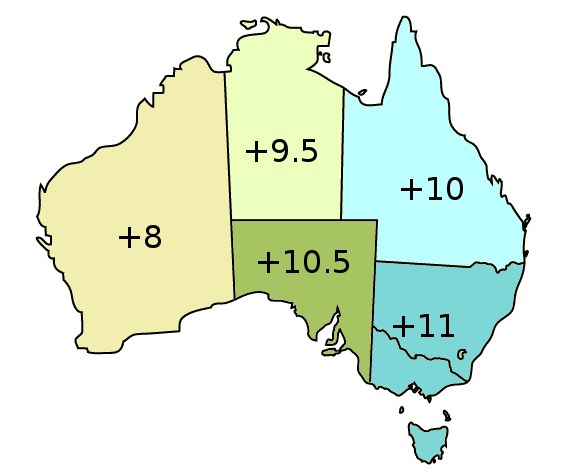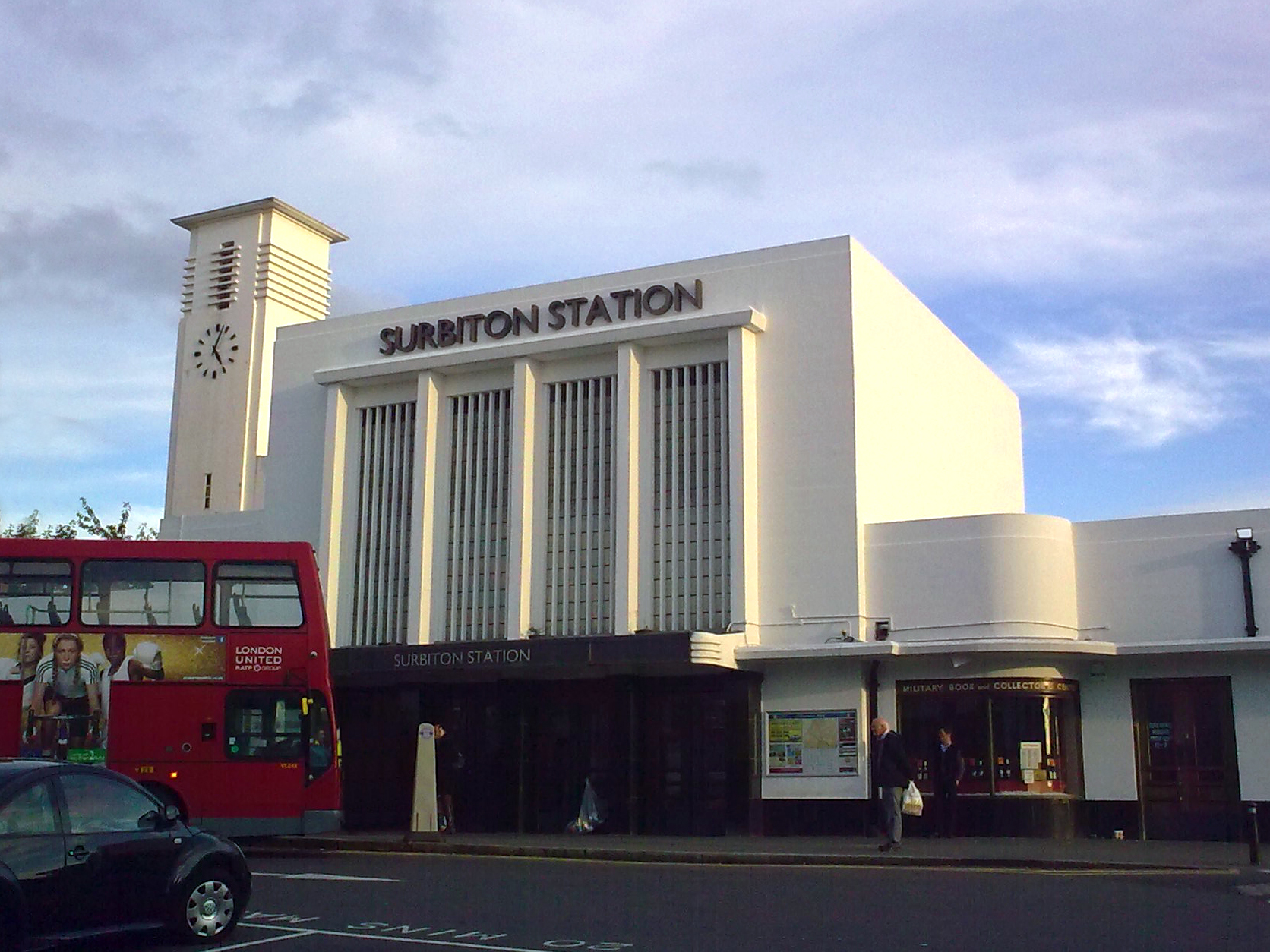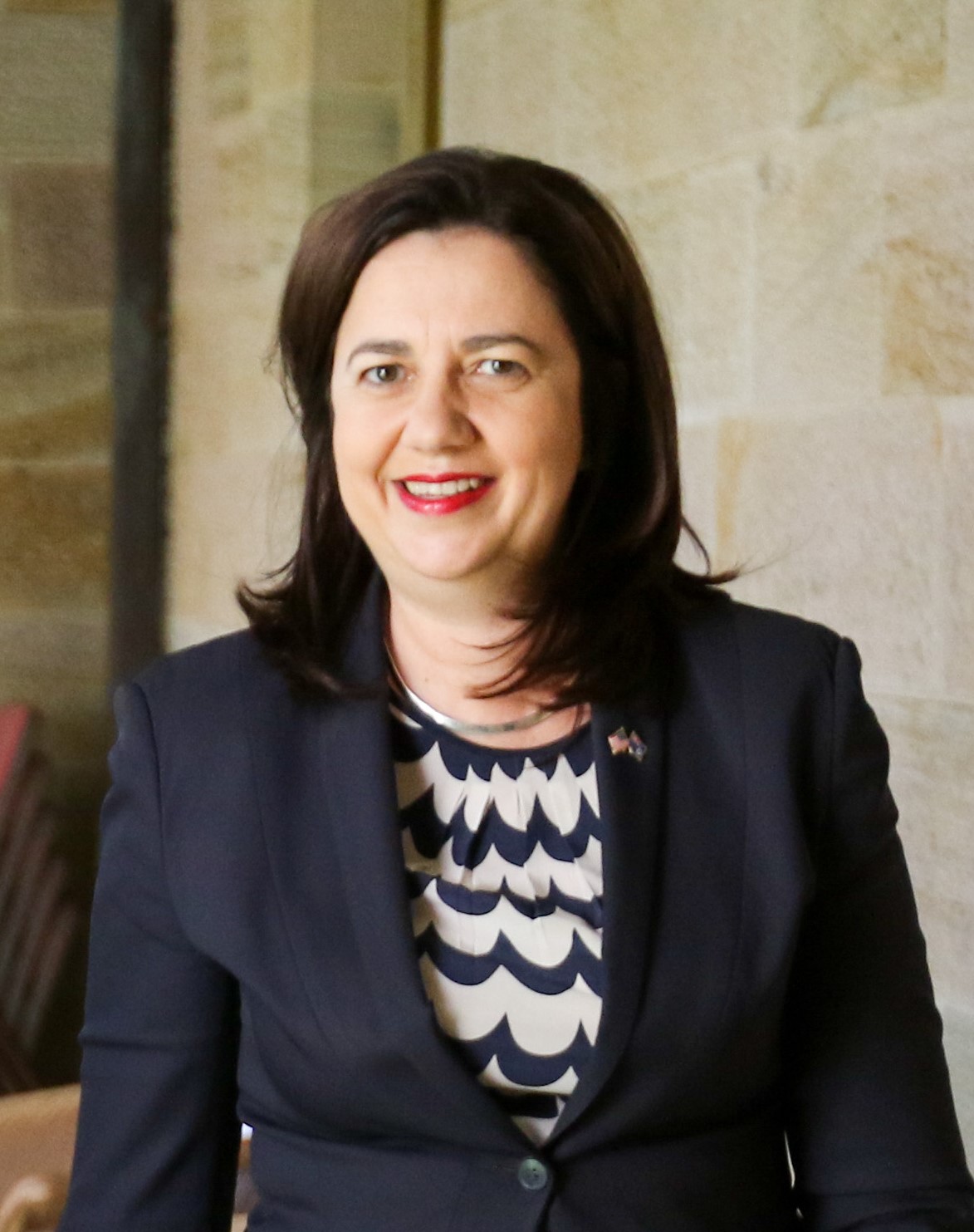|
Surbiton, Queensland
Surbiton is a former rural locality in the Barcaldine Region, Queensland, Australia. In the , Surbiton had a population of 80 people. On 22 November 2019 the Queensland Government decided to amalgamate the localities in the Barcaldine Region, resulting in five expanded localities based on the larger towns: Alpha, Aramac, Barcaldine, Jericho and Muttaburra. Surbiton was incorporated into Alpha. Geography The Belyando River forms the north-western boundary of the locality. Native Companion Creek flows from the south-west (Alpha/Beaufort) through to the north of the locality where it becomes a tributary of the Belyando River. The Alpha Clermont Road passes through the locality from the south (Alpha) to the north-west (Quetta). The principal land use is grazing on native vegetation. History The origin of the name is unclear but there has been a Surbiton pastoral run since at least 1866 when it was operated by William Killgour, who came to the colony of New South Wales from ... [...More Info...] [...Related Items...] OR: [Wikipedia] [Google] [Baidu] |
AEST
Australia uses three main time zones: Australian Western Standard Time (AWST; UTC+08:00), Australian Central Standard Time (ACST; UTC+09:30), and Australian Eastern Standard Time (AEST; UTC+10:00). Time is regulated by the individual state governments, some of which observe daylight saving time (DST). Australia's external territories observe different time zones. Standard time was introduced in the 1890s when all of the Australian colonies adopted it. Before the switch to standard time zones, each local city or town was free to determine its local time, called local mean time. Now, Western Australia uses Western Standard Time; South Australia and the Northern Territory use Central Standard Time; while New South Wales, Queensland, Tasmania, Victoria, Jervis Bay Territory, and the Australian Capital Territory use Eastern Standard Time. Daylight saving time (+1 hour) is used in jurisdictions in the south and south-east: South Australia, New South Wales, Victoria, Tasm ... [...More Info...] [...Related Items...] OR: [Wikipedia] [Google] [Baidu] |
Barcaldine Region
The Barcaldine Region is a local government area in Central West Queensland, Australia. Established in 2008, it was preceded by three previous local government areas which had existed for over a century. It has an estimated operating budget of A$21.6 million. History Barcaldine Region includes the traditional tribal lands of the Iningai. Iningai (also known as Yiningay, Muttaburra, Tateburra, Yinangay, Yinangi) is an Australian Aboriginal language spoken by the Iningai people. The Iningai language region includes the landscape within the local government boundaries of the Longreach Region and Barcaldine Region, particularly the towns of Longreach, Barcaldine, Muttaburra and Aramac as well as the properties of Bowen Downs and catchments of Cornish Creek and Alice River. Kuungkari (also known as Kungkari and Koonkerri) is a language of Western Queensland. The Kuungkari language region includes the landscape within the local government boundaries of Longreach Shire C ... [...More Info...] [...Related Items...] OR: [Wikipedia] [Google] [Baidu] |
Emerald, Queensland
Emerald is a rural town and locality in the Central Highlands Region, Queensland, Australia. In the , Emerald had a population of 14,906 people. The town is the headquarters for the Central Highlands Regional Council. Geography Emerald lies on the Nogoa River, a tributary of the Fitzroy River. The town lies approximately from the Coral Sea coast and approximately 270 km west of the city of Rockhampton by road at the junction of the Capricorn and Gregory highways. Emerald sits approximately 10 km south of the Tropic of Capricorn. History The traditional owners include the Gayiri people who occupied the area for tens of thousands of years before European colonisation began in the nineteenth century. The Gayiri (Kairi, Khararya) language region takes in the landscape of the Central Highlands Region, including Emerald and the Nogoa River. The first European to explore the area was Ludwig Leichhardt between 1843 and 1845. The British Colony of Queensland ... [...More Info...] [...Related Items...] OR: [Wikipedia] [Google] [Baidu] |
Surbiton
Surbiton is a suburban neighbourhood in South West London, within the Royal Borough of Kingston upon Thames (RBK). It is next to the River Thames, southwest of Charing Cross. Surbiton was in the historic county of Surrey and since 1965 it has been in Greater London. Surbiton comprises four of the RBK's wards: Alexandra, Berrylands, St. Mark's, and Surbiton Hill. Founded originally as Kingston-upon-Railway when the area was first developed in the 1840s, Surbiton possesses a mixture of grand 19th-century townhouses, Art Deco courts, and more recent residential blocks blending in with semi-detached 20th-century housing estates. With a population of 45,132 in 2016, it accounts for approximately 25% of the total population of the Royal Borough of Kingston upon Thames. Surbiton extends over an area of . Etymology Though Surbiton only received its current name in 1869, the name is attested as ''Suberton'' in 1179, ''Surbeton'' in 1263, ''Surpeton'' in 1486, and finally ''Surbito ... [...More Info...] [...Related Items...] OR: [Wikipedia] [Google] [Baidu] |
The Brisbane Courier
''The Courier-Mail'' is an Australian newspaper published in Brisbane. Owned by News Corp Australia, it is published daily from Monday to Saturday in tabloid format. Its editorial offices are located at Bowen Hills, in Brisbane's inner northern suburbs, and it is printed at Murarrie, in Brisbane's eastern suburbs. It is available for purchase throughout Queensland, most regions of Northern New South Wales and parts of the Northern Territory. History The history of ''The Courier-Mail'' is through four mastheads. The ''Moreton Bay Courier'' later became '' The Courier'', then the '' Brisbane Courier'' and, since a merger with the Daily Mail in 1933, ''The Courier-Mail''. The ''Moreton Bay Courier'' was established as a weekly paper in June 1846. Issue frequency increased steadily to bi-weekly in January 1858, tri-weekly in December 1859, then daily under the editorship of Theophilus Parsons Pugh from 14 May 1861. The recognised founder and first editor was Arthur Sidney Lyo ... [...More Info...] [...Related Items...] OR: [Wikipedia] [Google] [Baidu] |
The Queenslander
''The Queenslander'' was the weekly summary and literary edition of the '' Brisbane Courier'', the leading journal in the colony—and later, federal state—of Queensland since the 1850s. ''The Queenslander'' was launched by the Brisbane Newspaper Company in 1866, and discontinued in 1939. History ''The Queenslander'' was first published on 3 February 1866 in Brisbane by Thomas Blacket Stephens. The last edition was printed on 22 February 1939. In a country the size of Australia, a daily newspaper of some prominence could only reach the bush and outlying districts if it also published a weekly edition. Yet ''The Queenslander'', under the managing editorship of Gresley Lukin—managing editor from November 1873 until December 1880—also came to find additional use as a literary magazine. In September 1919, a series of aerial photographs of Brisbane and its surrounding suburbs were published under the title, ''Brisbane By Air''. The photographs were taken by the newspape ... [...More Info...] [...Related Items...] OR: [Wikipedia] [Google] [Baidu] |
Pastoralism
Pastoralism is a form of animal husbandry where domesticated animals (known as " livestock") are released onto large vegetated outdoor lands ( pastures) for grazing, historically by nomadic people who moved around with their herds. The animal species involved include cattle, camels, goats, yaks, llamas, reindeer, horses and sheep. Pastoralism occurs in many variations throughout the world, generally where environmental characteristics such as aridity, poor soils, cold or hot temperatures, and lack of water make crop-growing difficult or impossible. Operating in more extreme environments with more marginal lands means that pastoral communities are very vulnerable to the effects of global warming. Pastoralism remains a way of life in many geographic areas, including Africa, the Tibetan plateau, the Eurasian steppes, the Andes, Patagonia, the Pampas, Australia and many other places. , between 200 million and 500 million people globally practised pastora ... [...More Info...] [...Related Items...] OR: [Wikipedia] [Google] [Baidu] |
Belyando River
The Belyando River, including the Belyando River (Western Branch), is a river system located in Central Queensland, Australia. At in length and with a catchment area of , the Belyando River system is one of the longest rivers in Queensland. It is pronounced Bel-yando. Course and features Comprising a mix of anabranches from source to mouth, the Belyando River and the Belyando River (Western Branch) rise below Mount Narounyah in the Drummond Range, part of the Great Dividing Range in the area southeast of . The river flows generally in a northerly direction, joined by twenty-nine tributaries including the Carmichael River. The Belyando River flows through a series of waterholes and lagoons including Grays Lagoon, Bakoolama Waterhole, Ten Mile Waterhole, Boadles Waterhole, Georges Waterhole, Broadna Waterhole, Alinya Waterhole, Sandy Camp Waterhole, Bygana Waterhole, Dunjarrobina Waterhole and Yarmina Waterhole. The river reaches its confluence with the Suttor River before fl ... [...More Info...] [...Related Items...] OR: [Wikipedia] [Google] [Baidu] |
Muttaburra
Muttaburra is an outback town and locality in the Barcaldine Region, Queensland, Australia. Muttaburra was the discovery site of the '' Muttaburrasaurus'', one of Australia's most famous dinosaurs. Geography Muttaburra is in the central west of Queensland. The town is located on the banks of the Thomson River, which is part of the Lake Eyre drainage basin. The region is with a sub-basin of the Great Artesian Basin. The Great Artesian Basin supplies water from bores to the towns of Muttaburra and Aramac. The area is well known for its good quality land that is used for sheep and cattle grazing. The main industry of the Muttaburra area is grazing. The undeveloped town of Scarrbury is within the locality (). Scarrbury is located on Aramac Creek along Vera Park Road. History Muttaburra lay on the traditional tribal lands of the Iningai. Iningai (also known as Yiningay, Muttaburra, Tateburra, Yinangay, Yinangi) is an Australian Aboriginal language spoken by the Iningai peo ... [...More Info...] [...Related Items...] OR: [Wikipedia] [Google] [Baidu] |
Jericho, Queensland
Jericho is a rural town and locality in the Barcaldine Region, Queensland, Australia. At the , Jericho had a population of 229 people. Geography Jericho is in Central West Queensland. The town is centrally located in the south of its locality. The Capricorn Highway traverses the locality from west ( Garfield/Mexico) to east ( Hobartville/Mexico), passing through the town on Darwin Street. The Blackall Jericho Road commences at the town and exits the locality via the south (Mexico). The Central Western railway passes through the town and locality, immediately to the south of the highway to the west of the town and immediately to the north of the highway to the east of the town. The town is served by the Jericho railway station on Darwin Street (). Lagoon Creek rises north of the town and exits the locality to the north-east (Garfield). Jordan Creek enters the locality from the south (Mexico), passes to the immediate east of the town and splits into two branches north of the ... [...More Info...] [...Related Items...] OR: [Wikipedia] [Google] [Baidu] |
Aramac, Queensland
Aramac is a rural town and locality in the Barcaldine Region, Queensland, Australia. In the , Aramac had a population of 299 people. Geography Aramac is located north of Barcaldine, and by road from the state capital, Brisbane. It is situated on Aramac Creek, which flows into the Thomson River west of town. The predominant industry is grazing. The town water for Aramac is supplied from two bores connecting into the Great Artesian Basin. History Aramac lay on the traditional tribal lands of the Iningai. Iningai (also known as Yiningay, Muttaburra, Tateburra, Yinangay, Yinangi) is an Australian Aboriginal language spoken by the Iningai people. The Iningai language region includes the landscape within the local government boundaries of the Longreach Region and Barcaldine Region, particularly the towns of Longreach, Barcaldine, Muttaburra and Aramac as well as the properties of Bowen Downs and catchments of Cornish Creek and Alice River. In the 1850s, pastoralist an ... [...More Info...] [...Related Items...] OR: [Wikipedia] [Google] [Baidu] |
Queensland Government
The Queensland Government is the democratic administrative authority of the Australian state of Queensland. The Government of Queensland, a parliamentary constitutional monarchy was formed in 1859 as prescribed in its Constitution, as amended from time to time. Since the Federation of Australia in 1901, Queensland has been a State of Australia, with the Constitution of Australia regulating the relationships between all state and territory governments and the Australian Government. Under the Australian Constitution, all states and territories (including Queensland) ceded powers relating to certain matters to the federal government. The government is influenced by the Westminster system and Australia's federal system of government. The Governor of Queensland, as the representative of Charles III, King of Australia, holds nominal executive power, although in practice only performs ceremonial duties. In practice executive power lies with the Premier and Cabinet. The Cabinet ... [...More Info...] [...Related Items...] OR: [Wikipedia] [Google] [Baidu] |


.jpg)


